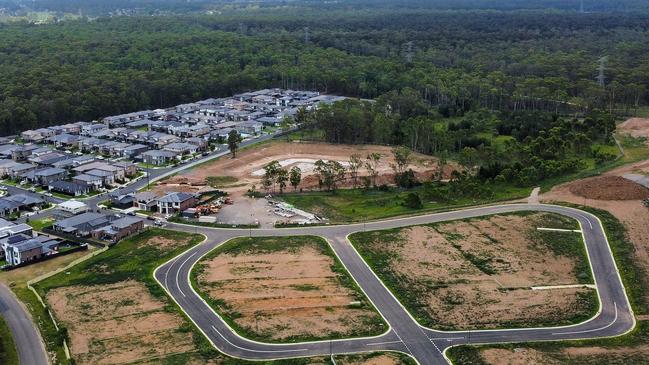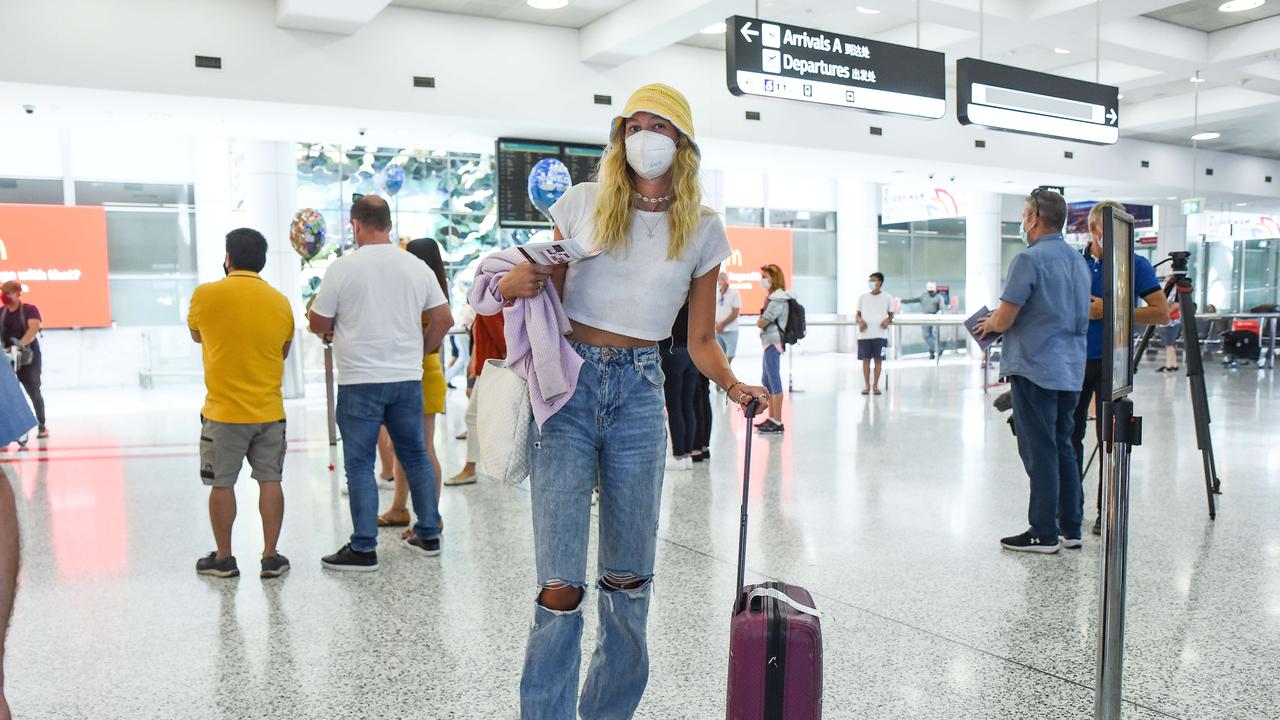Builders warn Anthony Albanese of cracks in housing target
Anthony Albanese’s pledge to build 1.2 million new homes is under threat amid warnings that hundreds more construction firms reporting cash flow stress could plunge into insolvency.

Construction industry chiefs have warned Anthony Albanese the government is not on track to achieve its five-year target of building 1.2 million new homes, amid warnings that hundreds more construction firms reporting cashflow stress could plunge into insolvency.
As Mr Albanese blitzed key states and electorates promoting himself as a “pro-jobs prime minister”, building, housing and business chiefs said more companies would fail unless the government relieved regulatory and cost pressures.
Australian Bureau of Statistics data on Wednesday shows building activity in the September quarter plunged to its lowest levels in over a decade, prompting the Housing Industry Association to warn the “government won’t meet its housing target”.
The figures, highlighting a 22 per cent drop in new home starts compared to the year before, follow Australian Securities & Investments Commission data revealing almost 1400 construction companies went insolvent between July and December.
HIA managing director Jocelyn Martin said the number of building companies reporting cashflow pressures was “alarming”, adding: “Nothing is trending in the direction of our ability to build 1.2 million homes.”
The Albanese government and national cabinet, supported by the $10bn Housing Australia Future Fund and national housing accord, have pledged to build 1.2 million well-located new homes over five-years from July this year.
Master Builders Australia and the HIA are urging the government to avoid adding regulatory burdens on struggling construction firms, with new rules around silica, energy and industrial relations heaping pressure on tradies.
Ms Martin said builders were “carrying all of the risk” in paying subcontractors and suppliers amid a rapid slowdown in the number of new clients.
She said small, medium and large construction businesses were experiencing cashflow pressures including long-established and successful builders.
“When things blow out in terms of time frame, the risk that the builder is holding is exacerbated,” Ms Martin said. “When you add higher costs, availability of trades, uncertainty driven by interest rates and some government decisions, you end up with a very difficult environment for an industry that is carrying so much risk for so long in that building process.”
MBA chief executive Denita Wawn said their grim 2023-24 forecasts were likely to be “worse” than expected.
“There’s a number of external factors out of the control of the industry. While inflation on some building materials has gone down, some have gone up including concrete. That’s putting massive cost pressures on,” Ms Wawn said.
“The other big factor is around ongoing labour shortages, and that’s reflected in the time it’s taking to complete a house and therefore increased costs, which reduces people’s willingness to proceed with the build.”
Ahead of a showdown in parliament next month over independent contracting, Ms Wawn warned that Labor’s legislated IR reforms would increase costs by the end of 2024.
“We argue that the IR changes will … increase in inflation. That’s counter to the government’s narrative,” she said.
“We are really supportive of the government’s housing agenda … the problem is that it’s not being supported by other portfolios.”
Speaking alongside salmon workers in Hobart where he was heckled by environmentalists, Mr Albanese said: “I am a pro-jobs prime minister and we need to support jobs”. Earlier in Adelaide, he defended Labor’s $15bn National Reconstruction Fund and pledged to upskill more Australian workers.
“What we do is work with the industry in order to make sure that we can have jobs and successful growth in the areas that we’ve identified that include renewables and new technology,” Mr Albanese said.
Housing Minister Julie Collins said the government was committed to its 1.2 million new homes pledge.
“We have a broad ambitious housing agenda and we’re working hard every day to deliver it,” Ms Collins said.
Opposition housing spokesman Michael Sukkar said “Labor loves to make and break promises, and the fake 1.2 million homes commitment is just another nail in the coffin”.
“After 20 months, all Labor has to show is a national housing crisis with no plan of alleviation. Sadly, the housing crisis is only set to get worse in 2024,” Mr Sukkar said.
Robert Shaw, who runs Perth-based construction company Daly & Shaw, said the firm was “winding back” from their peak of 350 subbies and 20 staff employed.
“It’s a balance between taking on new jobs and finishing the jobs you’ve got, said Mr Shaw, who is also an MBA director.
“Some say you shouldn’t be able to take on jobs until you finish the jobs you’ve got, but builders are having to put their own money into these jobs.”
Australian Industry Group chief executive Innes Willox said “the Australian economy is “going through a clear and significant slowdown and the latest insolvency figures reflect its impact in the real economy”.
Urging governments to cut costs and regulatory burdens driving companies “to the wall”, Mr Willox said unless “clear and urgent steps are taken to help businesses, not punish them, our slowdown risks becoming deeper and more protracted, with harsh consequences for our economy.”
“The numbers don’t lie. It is becoming more difficult to own or operate a business in Australia,” Mr Willox said.
Business Council of Australia chief executive Bran Black warned that “Australia is becoming less competitive, and that is already costing investment, jobs and higher wages”.
“The cold reality of my engagement with Australia’s biggest employers is that current settings are already seeing investment and jobs go elsewhere. Unless we address our competitiveness challenge, all Australians will be worse off,” Mr Black said.
After the ASIC data showed 243 manufacturers had called in administrators in the past six months, Industry Minister Ed Husic said insolvencies declined to historically low levels during the Covid pandemic “due to a range of factors including accommodations like temporary changes to insolvency laws and forbearance by creditors”.
Mr Husic told The Australian that since Labor won the 2022 election, manufacturing jobs had “ increased by nearly 100,000 … in May 2022, there were 845,000 manufacturing jobs, now there are 931,400 jobs”. He also confirmed the NRF may indirectly support the construction industry via support for brick and timber suppliers.
V2 chief executive Tim York, whose company shut down its Wodonga factory last year, said he was “seeing increased cost pressures across all of our inputs”.
“But we’re finding ways to deal with it. We’re getting more efficient, passing on small price increases to customers, and things like that.
“But we certainly aren’t a business that’s shrinking because of the economic climate,” he said.
Mr York said the company had acquired Solara and taken on a Castle Hill factor that employs around 150 people.





To join the conversation, please log in. Don't have an account? Register
Join the conversation, you are commenting as Logout